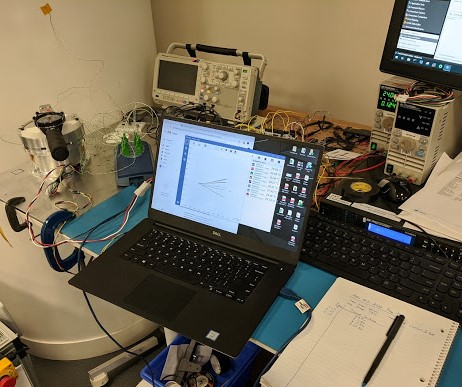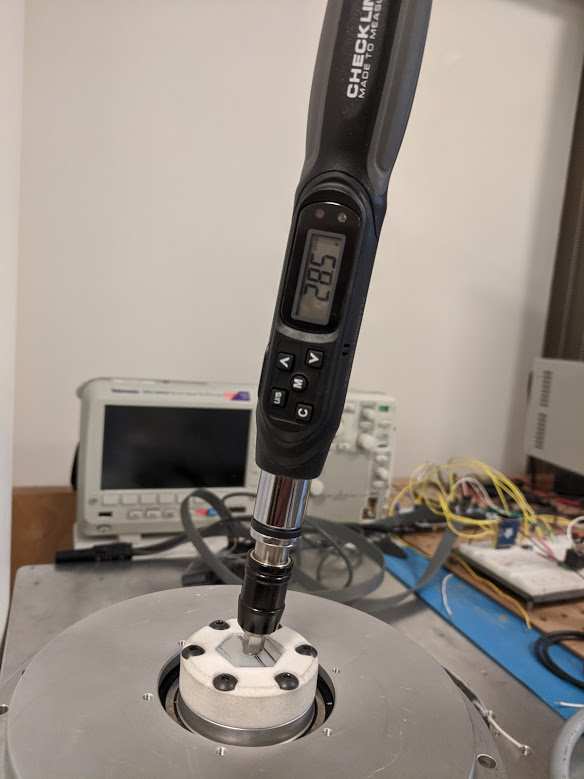Inrunner Motor Testing
In order to best optimize motors for the use case, testing has to be done to record parameters such as cogging torque, temperature, vibrations, stiffness, and many other parameters. Using these criteria in conjunction with the motor size, cost, and efficiency, the best motor can be specified.
The frame shown on the right was created to house all motors, drivers, and any other electronics during the testing. This was meant to simulate the conditions the motors would be used in.

The motor testing involved placing motors from different suppliers into the testing rig, then performing tests on each criteria. The data was then placed into a decision matrix, where each property was ranked on it's importance. After performing the matrix calculations, it was clear that one motor performed significantly better than others.

Shown above is the temperature test. This test was performed by placing temperature sensors onto the motor at different locations, then stalling the motor while providing the maximum rated current. The output torque was also recorded using a torque measuring wrench with 3D printed adapters to mechanicaly lock the rotor.
Shown below is the cogging torque setup, as well as the data from the deflection testing.
